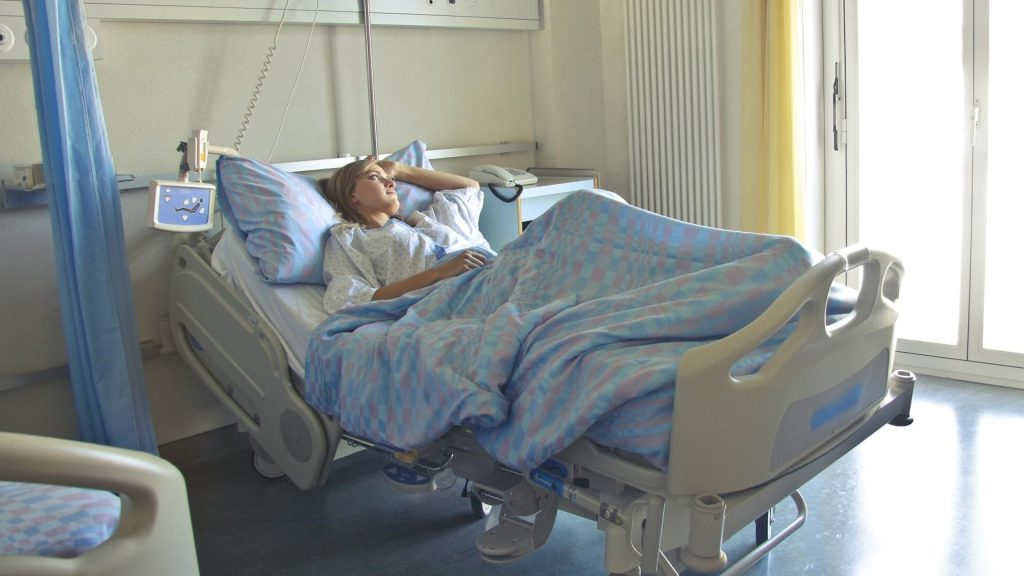FREE Shipping on Orders over $89 with Account – Create One Today!
- (844)-859-9400
- Get Help

Bed sores, also known as pressure ulcers or pressure injuries, are a common yet serious condition that affects individuals who have limited mobility. These ulcers can form when constant pressure on an area of skin restricts blood flow, typically in people who are bedridden or confined to a wheelchair. The severity of bed sores can progress through four distinct stages, each with its own characteristics and health implications.
Identifying the four stages of bed sores is crucial for effective management and treatment. Below, we will run through these four stages and explain how to identify them. Additionally, we will showcase some products here at Medical Monks that can help prevent these sores from worsening into the later stages.
Bed sores, also known as pressure ulcers, develop progressively through four distinct stages, each characterized by increased severity and specific symptoms.
In Stage 1, the affected skin appears red on lighter skin and may have a blue or purple tint on darker skin. The area feels warm and may burn or itch, indicating the beginning of skin breakdown due to prolonged pressure.
Moving to Stage 2, the sore progresses to a blister or an open wound. The skin loss occurs in the outer layer and part of the underlying layer. At this stage, the sore is painful and the skin around it may be discolored.
At Stage 3, there is full-thickness skin loss, potentially revealing fat layers beneath the skin. The sore looks more like a crater as the damage extends down to the tissue below the skin.
The most severe, Stage 4, involves extensive damage below the skin, affecting muscles, bones, and supporting structures such as tendons or cartilage. The risk of infection is high, and significant tissue death can occur.
The initial step in diagnosing bedsores, also known as pressure ulcers, is a thorough examination by a healthcare provider.
The professional will inspect the patient’s skin, focusing on areas where pressure sores are most likely to develop, such as the buttocks, heels, and hips. During the assessment, they often look for early signs like tenderness, discoloration, or variations in texture.
| Stage | Description |
| 1 | Skin redness without open wound |
| 2 | Broken skin or blistering; some loss of thickness |
| 3 | Crater-like sore extending into fat tissue |
| 4 | Large-scale loss of tissue; exposure of muscle, bone |
Further diagnostic tools may include blood tests to evaluate overall health and determine if there is an infection. Healthcare providers might also use other technologies, like ultrasound, to examine soft tissue damage.
It is imperative to identify and stage the pressure ulcer correctly so that an appropriate treatment plan can be implemented.
Patients with limited mobility require frequent repositioning and assessment to prevent the progression of these wounds. Caregivers are trained to assess the skin regularly and to identify and react to the early signs of bedsores swiftly.
Key risk factors for developing bed sores include immobility, incontinence, poor nutrition, and decreased mental awareness. Individuals with medical conditions that limit their ability to change positions or cause a loss of sensory perception are at higher risk. Circulatory issues and age-related skin changes also contribute to the risk.
Effective treatment of bed sores involves strategies focused on relieving pressure, maintaining cleanliness, and promoting healing. These approaches must be tailored to the stage of the sore and the overall health of the patient.
Conservative management of bed sores includes methods that are non-invasive and generally revolve around basic care principles. Regular repositioning is crucial to alleviate pressure on affected areas. They may recommend utilizing special mattresses or cushions that redistribute weight and enhance circulation.
For instance, the Z-Flo™ Fluidized Positioner is an innovative cushion-like device filled with a formable material that retains its shape once set in a specific position. This feature enables healthcare providers or caregivers to more effectively position a patient who is confined to bed for regular two-hourly turns. Unlike ordinary pillows that tend to compress and deform over time, this positioner maintains its integrity and shape.
Cleanliness and moisture management are pivotal to prevent infection and encourage healing. The use of scientifically proven antibacterial products can help reduce microbes in the area. Dressings should be applied to provide a moist environment that can hasten the healing process, and they must be changed regularly to keep the area clean.
For this, Medical Monks recommends Mepilex® bordered dressings with SafeTac® technology, which are designed with bed sore and ulcer prevention in mind.
Monitoring and ongoing care are critical components in preventing bed sores from worsening. Healthcare providers should assess the patient’s skin daily, especially over bony areas, to check for early signs of pressure ulcers.
Daily Skin Inspections
Position Changes
Skin Care
Nutrition and Hydration
Documentation
For patients with existing bed sores, treatment plans often include cleaning the sore, removing damaged tissue, and applying dressings or topical medications. It’s essential to prevent infection and promote healing.
Bedsores, also known as pressure ulcers, progress through four distinct stages, with each stage presenting increasing levels of tissue damage.
Awareness and education on detection and care can vastly improve outcomes for those at risk. Medical professionals can provide comprehensive guidance and support for both patients and caregivers in managing these sensitive conditions.
Prompt action in response to any signs of skin damage is essential.

Edited for content by ADAM PAGE.
